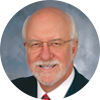Next, it was on to Sydney, where I had dinner with the dean of the chiropractic program, Dr. Ray Hayek, the night before my presentation to the Macquarie University chirostudents. The university's chiropractic division has grown to more than 700 students, and a mature research effort is evolving. As you may know, Dr. Hayek is the principal investigator in the large-scale asthma study in Australia. Preliminary results in this project are encouraging, and the design of the study is one of the most sophisticated I have ever seen. Dr. Lucy Macnaught heads up the department of chiropractic skills and has been influential in introducing the Activator Methods technology within the curriculum. A delightful phenomenon to witness at Macquarie was the teamwork of the faculty. Dr. Hayek has surrounded himself with a group of very dedicated and talented folks, and it was exciting to be around them.
From Sydney, I flew across the continent to Perth, in Western Australia. Murdock University has just implemented a chiropractic program and has yet to graduate a class. Stephen Pallister, DC, formerly at the CMCC, is heading up this brand-new program. (Murdock began as an agricultural and veterinary medicine college.) Dr. Pallister sees this as a great advantage for research in the future. I spoke to more than 150 of the most enthusiastic students I encountered on this tour.
From Australia, I headed north to Taiwan. There is no chiropractic law in this county, but the chiropractors practice under a health care business license. This was my second visit to Taiwan, and I was accompanied by my friend, Stephen Tsai, MD. Stephen, who practices in southern California, was born and educated in Taiwan. A second-generation allopathic and Oriental medicine physician, Dr. Tsai has many great connections in Taiwan, and of course, he is fluent in the language. I appreciated the red-carpet treatment afforded us.
Although the translation problem makes instruction tedious, the 50 students who attended our seminar were ready to take their basic proficiency examinations. All but one stayed up all night to study; all but one passed, with no grade lower than 95 percent. The one seminar attendee who failed to study failed the exam. He complained loudly and accused our instructor of being prejudiced. Some things never change - no matter where in the world one visits.
From Taiwan, it was onward to Tokyo, where I was greeted by our city coordinator, Dr. Kazuhiko Suto. In Japan, the chiropractic profession is rather fragmented, owing partly to the cultural traditions. The doctors in our class were all DCs, but there are some 6,000 bonesetters in the nation who also provide manual therapies. Within the Japanese culture, the tradition has evolved to reserve this occupational niche for blind folks. To this day, the visually impaired receive favored status from the government for their manual services. This makes it difficult for the chiropractic profession to enact any sort of exclusionary legislation. Nevertheless, our program in Japan is growing very rapidly under the oversight of our regional director, Dr. Yukinobu Yasui.
The RMIT has a branch campus in Japan, and I had the pleasure of presenting to its facility. This invitation also provided me with the opportunity to get reacquainted with my old friend, Dr. Takeyachi, whose family has poured its heart and soul into that school. It is a very modern facility and the university has made great progress. We had more than 70 students in our class, and they are now almost ready for their advanced testing. A goal of our enterprise is to have a worldwide network, so that anyone is able to receive standardized care anywhere in the world.
I returned from Asia to Arizona for a three-week respite, and then flew to Stockholm, Sweden, to speak at the Skandinaviska Kiropraktorhögskolan. This chiropractic college has operated since the early 1980s and is now becoming a solid institution under the leadership of Rektor Gordana Gedin. It has initiated a small research program and is very interested in developing scholarship and scientific investigation within its mission. The college is also interested in having one of its faculty, Dr. Hannibal Malki, become an instructor of the Activator Methods technique in the very near future.
There were 55 postgraduate students in my class, including new graduates and experienced field practitioners. Sweden is very beautiful in the springtime, and we enjoyed it immensely!
I ended my tour by attending the annual meeting of the International Society for the Study of the Lumbar Spine (ISSLS) in Portugal, which attracted some 4,000 attendees. The meeting brought together several societies with common interests in low back and spinal disorders. It was a stimulating event, but I really prefer when the ISSLS meets alone, since this generally yields a more productive meeting.
Nonetheless, I departed with a renewed pride in my chiropractic heritage and the contribution we are able to make to this part of health care. The ISSLS brings together clinicians and scientists from various disciplines, including medical doctors, surgeons and conservative and manual practitioners, and does so within a context that encourages cross-fertilization of theories and methods. Patient benefit, critical thinking, and a hunger for hard data drive ISSLS, and it is encouraging to see how well doctors of various persuasions get along, given their common purpose. If only we could spark this same sort of collaboration within our chiropractic ranks!
All in all, my recent globetrotting left me with a sense of hopefulness for chiropractic in the global context. I'd like to encourage all DCs who have the opportunity to observe the profession overseas to do so; we provincial Americans have much to learn from our international brethren.
*Activator Methods will be taught as an elective at RMIT Melbourne, commencing in 2005.
Arlan Fuhr, DC
Phoenix, Arizona
Click here for previous articles by Arlan Fuhr, DC.





